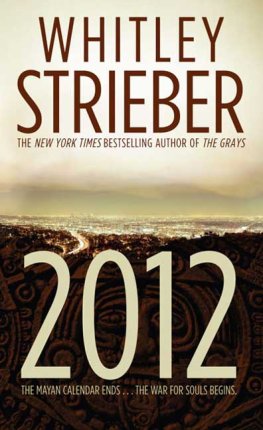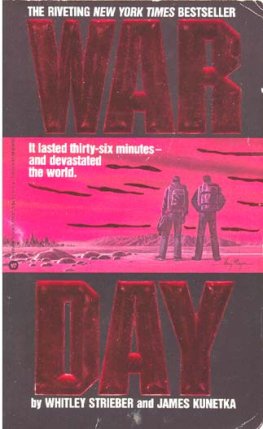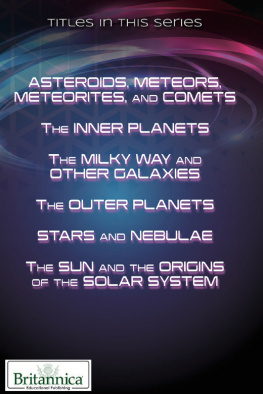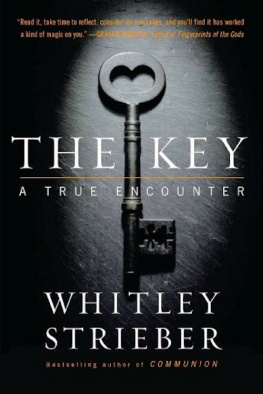Solar Flares
What You Need to Know
Whitley Strieber
Jeremy P. Tarcher/Penguin
a member of Penguin Group USA (Inc.)
New York
JEREMY P. TARCHER/PENGUIN
Published by the Penguin Group
Penguin Group (USA) Inc., 375 Hudson Street, New York, New York 10014, USA
Penguin Group (Canada), 90 Eglinton Avenue East, Suite 700, Toronto, Ontario M4P 2Y3, Canada (a division of Pearson Penguin Canada Inc.)
Penguin Books Ltd, 80 Strand, London WC2R 0RL, England
Penguin Ireland, 25 St Stephens Green, Dublin 2, Ireland (a division of Penguin Books Ltd)
Penguin Group (Australia), 707 Collins Street, Melbourne, Victoria 3008, Australia (a division of Pearson Australia Group Pty Ltd)
Penguin Books India Pvt Ltd, 11 Community Centre, Panchsheel Park, New Delhi110 017, India
Penguin Group (NZ), 67 Apollo Drive, Rosedale, Auckland 0632, New Zealand (a division of Pearson New Zealand Ltd)
Penguin Books (South Africa), Rosebank Office Park, 181 Jan Smuts Avenue, Parktown North 2193, South Africa
Penguin China, B7 Jiaming Center, 27 East Third Ring Road North, Chaoyang District, Beijing 100020, China
Penguin Books Ltd, Registered Offices: 80 Strand, London WC2R 0RL, England
Copyright 2012 by Walker and Collier, Inc.
All rights reserved. No part of this book may be reproduced, scanned, or distributed in any printed or electronic form without permission. Please do not participate in or encourage piracy of copyrighted materials in violation of the authors rights. Purchase only authorized editions.
Published simultaneously in Canada
ISBN 978-1-101-61633-8
Other Tarcher/ Penguin Titles by Whitley Strieber
The Key: A True Encounter
Solving the Communion Enigma: What Is to Come
There is something out there that could ruin our world in minutes. It has always been there and it has never been particularly dangerous. Not only that, it hasnt changed. But in the last few decades, it has become the most dangerous single thing that could happen to our civilization, more dangerous than the most massive earthquake or volcano, more dangerous than climate change, more dangerous even than nuclear war.
The reason that the danger has increased so dramaticallyhas crept up on usis that we have changed. By making our world so dependent on electricity delivered by huge electrical grids, we have transformed Planet Earth into a death trap, and the monster that could trigger the whole catastrophe is none other than our familiar old sun.
This is not hyperbole. It is stark, simple truth. Right now, a solar flare of sufficient power could literally wreck the developed world. Solar flares of a now-dangerous intensity are not all that uncommon, and not only that, our electrical and electronic infrastructure is becoming so extensive, and thus so fragile, that smaller and smaller solar flares can pose more and more serious hazards.
A solar flare is a burst of energy that emerges from sunspots, which form on the surface of the sun.
What is worse, due to the astonishing unwillingness of power companies to cooperate, good programs that would make us safer and are supported by both parties have been routinely prevented from being enacted.
There have been some excellent books written on this subject, most notably the works of Lawrence E. Joseph, and there are articulate advocates lobbying congress. But more is needed. There must be public outcry. At the end of this text, you will find a recommended letter to send to your representatives. For the sake of us all, I urge that you do so. When there is a simple way to fix a problem as dangerous as this one, there must be action.
Lets begin by exploring the world of the sun and its power, most specifically solar flares and the various dangers that they pose.
Flares are divided into five categories, based on the amount of energy they emit. These are classes A, B, C, M and X. An X-2 class flare is twice as powerful as an X-1 class flare, and four times more powerful than the highest M-class flare, an M-5. X-class flares up to the power of a November 2003 X-28 explosion have been recorded. It is fortunate that this flare just grazed Planet Earth, because it was later graded as a possible X-45, which would have made it even larger than an 1859 flare called the Carrington Event, which did strike Earth. Were a similar flare to hit us tomorrow, the results would be devastating.
In 1972 a solar flare caused the entire Illinois telephone system to shut down due to a power overload, and led AT&T to redesign its transatlantic cable system to reduce the chance that sun-induced overloads could shut it down.
On March 16, 1989, a geomagnetic storm took place following a solar flare that was only 16 percent as powerful as the Carrington Event. Because of the way it struck the earth, this minor storm shut down the entire Quebec power grid, leaving the six million customers of Hydro-Qubec without power for nine hours. Some customers remained without power for as long as two months.
In New Jersey, a $36-million-dollar transformer was destroyed, causing a nuclear plant to shut down for a short time, and radio transmissions across the northern U.S. and Canada were disrupted, sometimes in bizarre ways. In the upper Midwest, listeners found their radio stations drowned out by transmissions from the California Highway Patrol.
In 2003, another solar flare led to a geomagnetic storm that destroyed fourteen huge power transformers in South Africa, hampering that countrys electrical grid for years.
It is possible to protect our electrical system from this danger. The power grid can be protected without even much expense, and there are also things that cities, individuals and small groups, such as single large buildings or communities, can do to make certain they arent left without power if the grid goes down.
Its not as if authorities are unaware of the danger. On the contrary, scientists are so concerned that a 2008 National Academy of Sciences report states that a solar storm such as one that struck Earth in 1921 would leave 130 million Americans without power and knock out 350 of the huge transformers that our national electrical grid depends on. And there is no reason to believe that the damage would stop with the United States. Depending on how long the storm lasted, it could easily involve the entire world.
Solar storms have three parts. First, a sunspot appears on the surface of the sun. This is an area of unstable magnetic fields that in a telescope looks like a dark, irregular blotch on the solar surface, but is actually much hotter than the material around it. Explosions in sunspots send out solar flares, which are tremendous blasts of heat and charged particles. As they race out into space, the solar flares tear away sections of the suns atmosphere, which is called its corona. The corona consists mostly of ionized hydrogen. When a flare blasts into it, X-rays, gamma rays and other charged particles are emitted, and a portion is torn away and hurled into outer space.
This so-called coronal mass ejection, or CME, flies out into space at upwards of six million miles an hour, eventually striking any planet in our solar system in its path. When it hits Earth, it ceases to be called a solar storm and is identified as a geomagnetic storm. This is because, with its high electrical charge, it disrupts the magnetic field that occurs naturally around the earth.
For the most part, the only signs of a geomagnetic storm we see from the surface are auroral lights. Auroras occur when the oncoming coronal mass collides with our planets magnetic field. Part of the energy generated by such collisions appears in the form of light, which we see as the shuddering, eerily colorful northern lights, usually north of the Arctic Circle. The more powerful the storm, the farther south auroras appear. During extremely powerful geomagnetic storms, auroras have even been observed in the tropics.
















